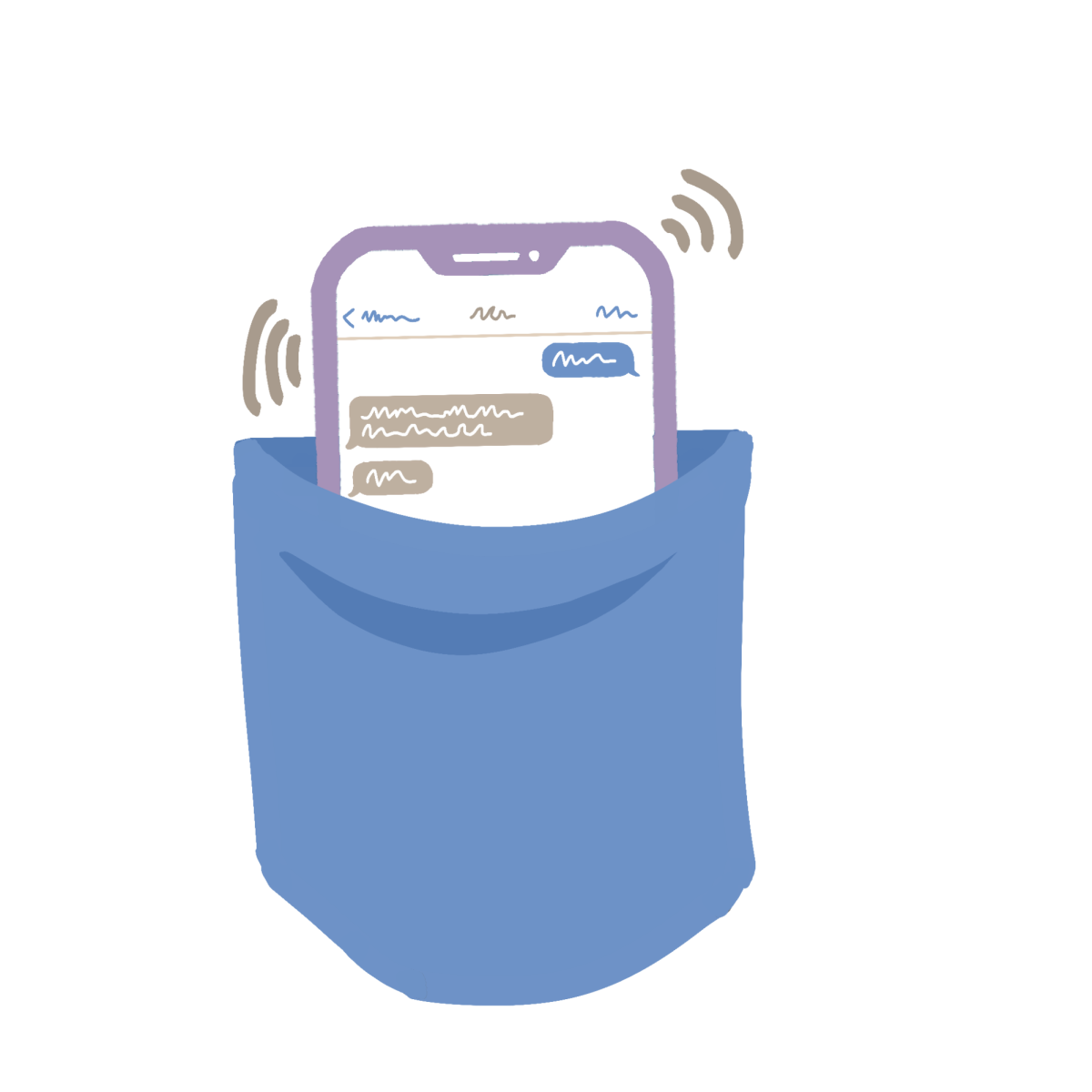In light of the new phone policy, phone pockets have been introduced into classrooms to hold students’ phones during class time. This new measure has been taken to reduce phone usage in class and ensure that students’ focus stays on the teacher and the class material.
The phone pockets are often stationed near the door so that students can quickly and easily put their phone in their designated pocket and then take their seat. The phones stay in the pockets for the duration of class time, and then students can once again have them when they exit the classroom after the bell.
Students have mixed feelings about the implementation of the phone pockets. Some students favor the policy and think that it will help with class focus.
“[I like the policy] because they will be less of a distraction in class,” said sophomore Jake Bramlett.
The phone pockets are also viewed by some as an effective manner of ensuring that students are not constantly checking their devices.
“You can stop people from looking at their phones,” said senior David Bond.
Not having their phone on them can lead to heightened anxiety in students during class.
“I feel like I focus better when I have my phone on me so that I know it’s not lost. I don’t like having my phone in there because I like to check my messages sometimes,” said freshman Kenzie Weaver. “I think they are useful for some people because they are just on their phones and they don’t care.”
Some students admit that in certain instances, the phone pockets are useful.
“In some classes, they might be necessary, like when the teachers are lecturing,” said Freshman Isabella Fort
Students who do not have their own phone can also make them feel unsafe in an emergency at school.
“What if there is an emergency and then we forget our phones and can’t contact our parents?” said Bond.
Teachers have all decided to use the phone pockets for their own reasons.
“I use them because they really help cut down on distractions,” French teacher Mrs. Duncan said.
Phone pockets can reduce student-teacher tension in case a student is on their phone and the teacher asks for it to be put away or takes it away.
“I don’t like the conflict that arises when I have to ask them to put their phone away, so it is better for the relationship if the phone is on the wall,” Duncan said.
Some teachers do it because they want to adhere closely to the phone policy.
“I use it because it’s the district policy. Zero technology unless for educational purposes only,” SPED teacher Snyder said.
Others believe that students should not attempt to keep their phones, because the phone policy strictly rules against it.
“I dislike that some students think they are worth arguing about when the phone rule is a non-negotiable,” public speaking teacher Mrs. Ball said.
Some teachers use them for different purposes.
“I specifically use [the phone pocket] when [students are] asking to use the bathroom so that they will return promptly,” Snyder said.
The teachers have seen a good impact on the students after implementing phone pockets in the classroom.
“My students’ ability to engage in what is being taught and also be more productive [has gotten better],” resource teacher Mrs. Jaegers said.
Phone pockets have limited distractions that come with phone notifications.
“I think it is an easy way to remove temptation from students,” Ball said.
Learning to put technology away during critical class material teaches students lessons in responsibility that will carry on later into life.
“I think this is a skill that students need to have for their future after high school,” Jaegers said.
Overall, a considerable change has been noted since the introduction of phone pockets.
“I was teaching before we implemented the phone policy. I can tell a huge difference in our students,” Jaegers said.






